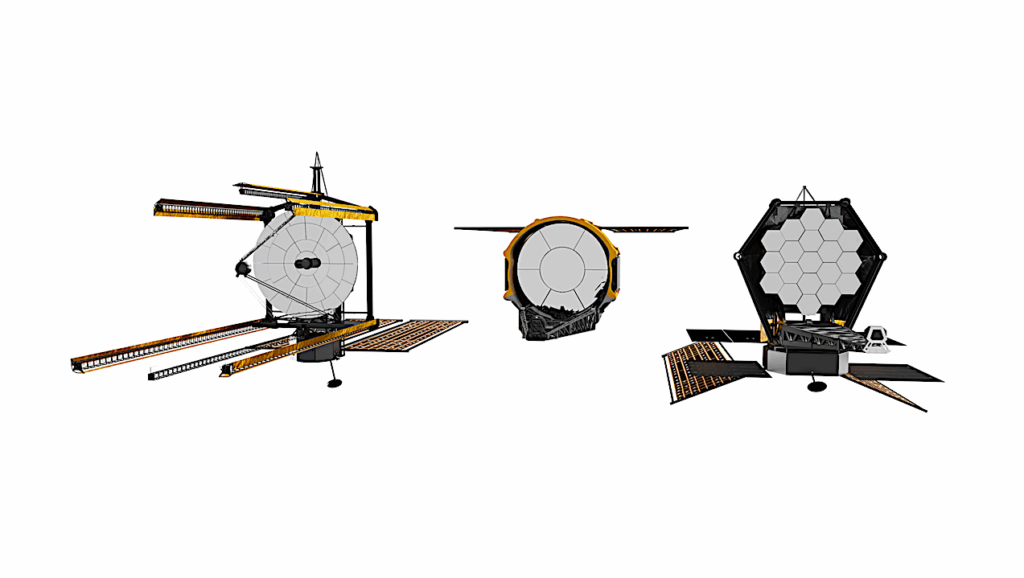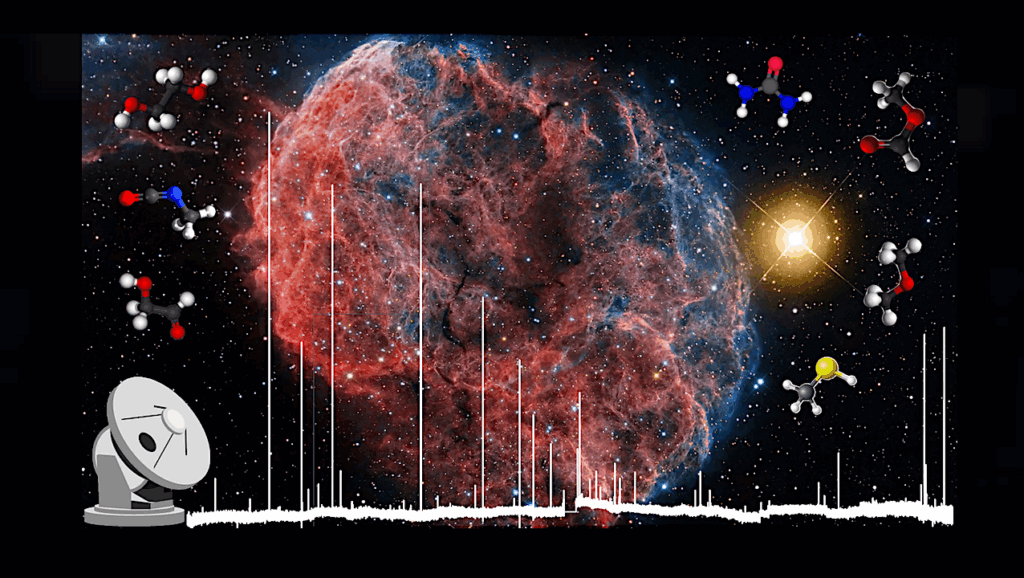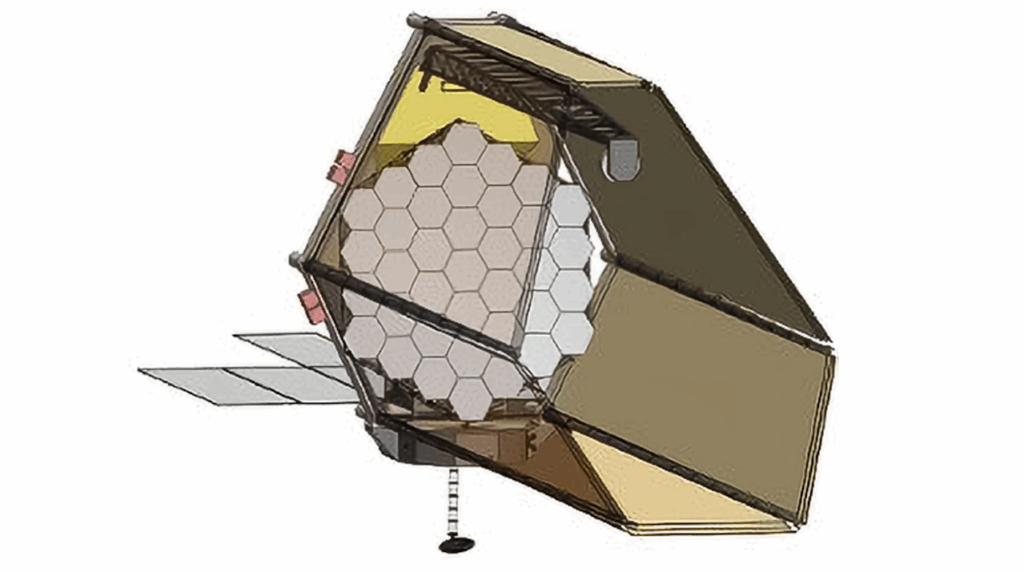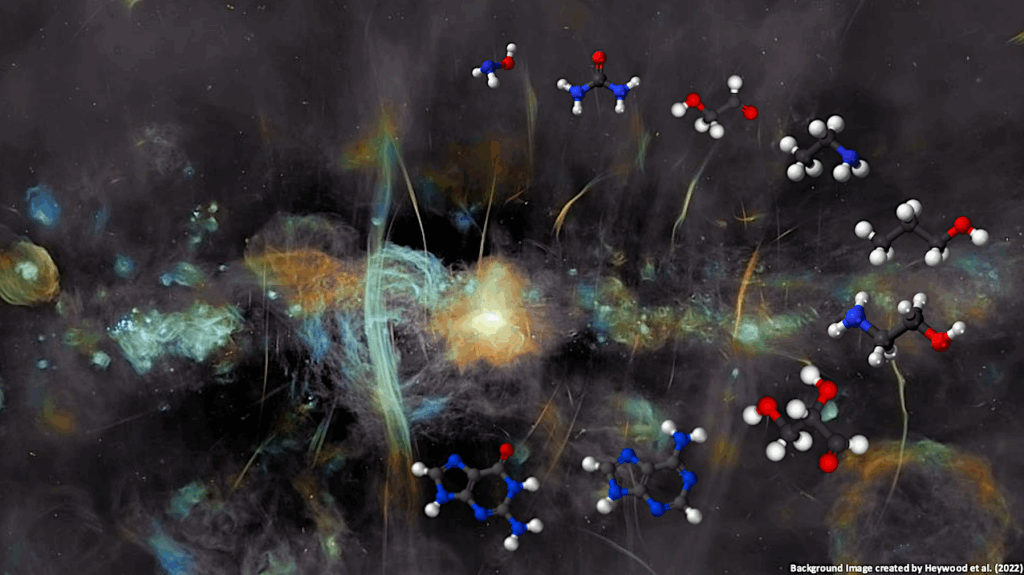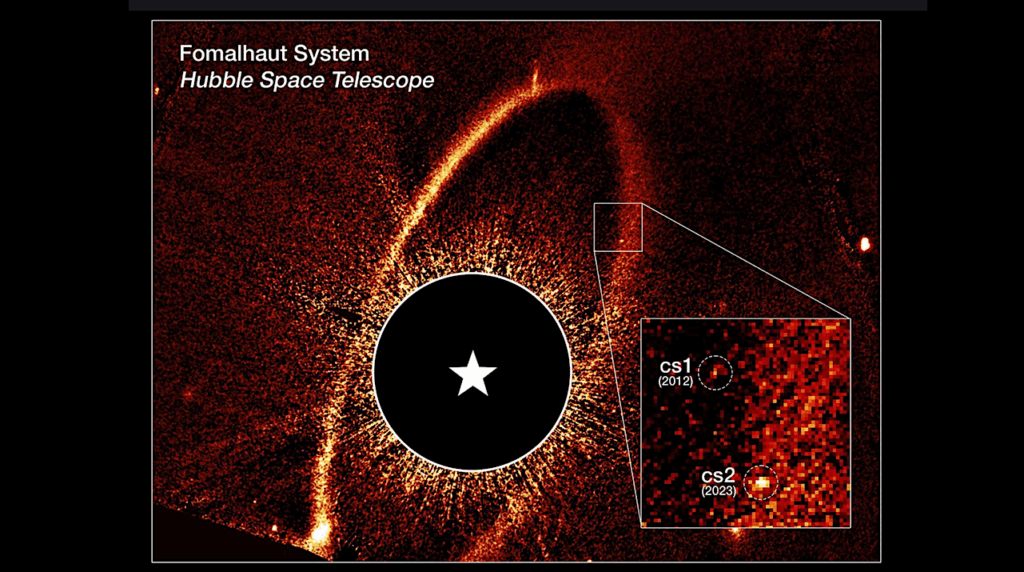From Exo-Earths To Exo-Venuses – Flux And Polarization Signatures Of Reflected Light
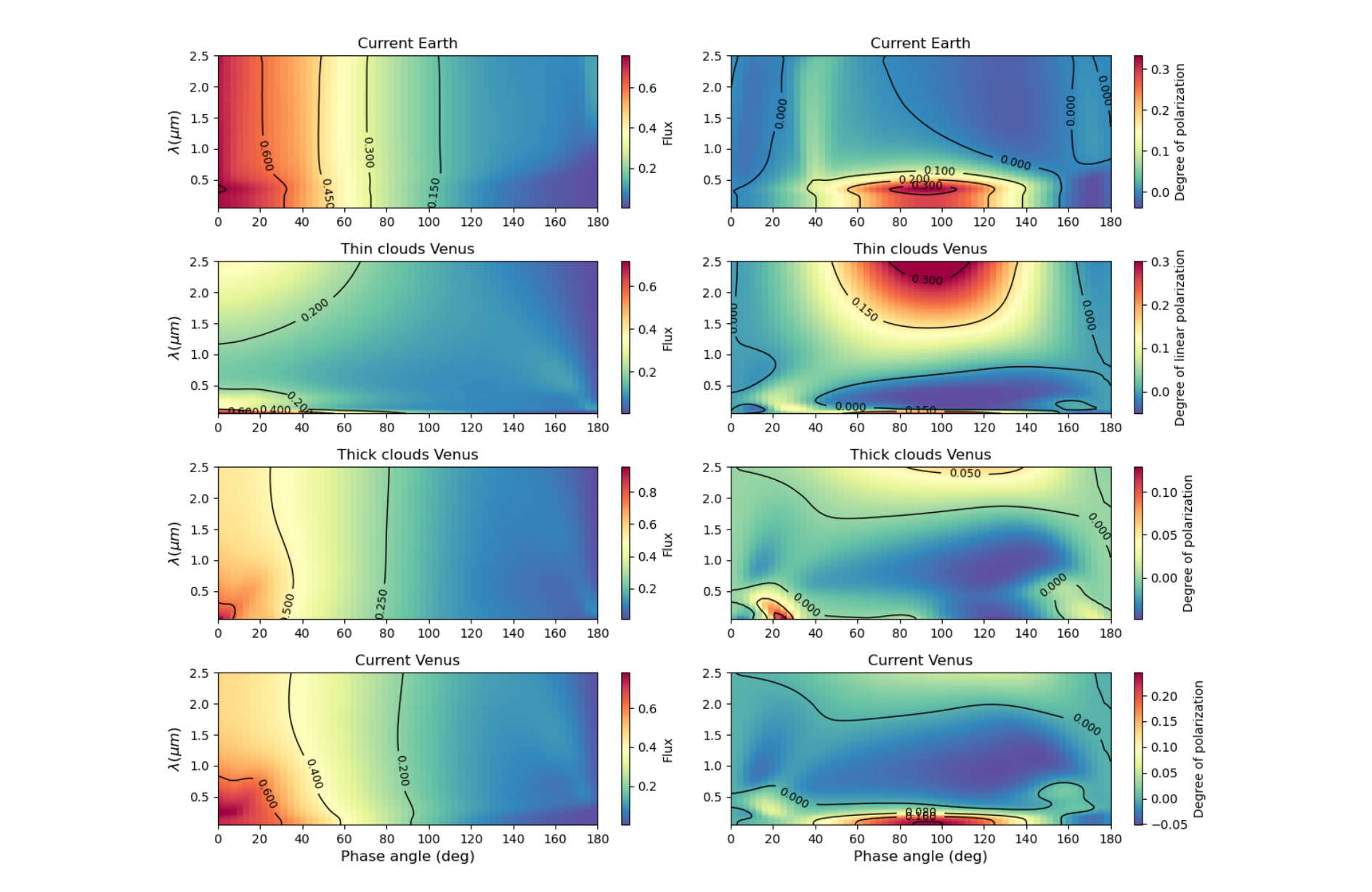
Terrestrial exoplanets in habitable zones are ubiquitous. It is, however, unknown which have Earth-like or Venus-like climates.
Distinguishing different planet-types is crucial for determining whether a planet could be habitable. We investigate the potential of polarimetry for distinguishing exo-Earths from exo-Venuses. We present computed fluxes and polarisation of starlight that is reflected by exoplanets with atmospheres in evolutionary states from current Earth to current Venus, with cloud compositions ranging from pure water to 0.75 sulfuric acid solution, for wavelengths between 0.3 and 2.5 microns.
The polarisation of the reflected light shows larger variations with the planetary phase angle than the total flux. Across the visible, the largest polarisation is reached for an Earth-like atmosphere with water clouds, due to Rayleigh scattering above the clouds and the rainbow near 40 deg phase angle.
In the near-infrared, the planet with a Venus-like CO2 atmosphere and thin water clouds shows the most prominent polarisation features due to scattering by the small cloud droplets. A planet around Alpha Centauri A would leave temporal variations on the order of 10E-13 W/m3 in the reflected flux and 10E-11 in the degree of polarisation along the planet’s orbit for a spatially unresolved star-planet system.
Star-planet contrasts are on the order of 10E-10. Current polarimeters cannot distinguish between the possible evolutionary phases of spatially unresolved terrestrial exoplanets, as a sensitivity near 10E-10 is required to discern the planet signal on the background of unpolarised starlight.
Telescopes capable of reaching planet-star contrasts lower than 10E-9 should be able to observe the variation of the planet’s resolved degree of polarisation as a function of its phase angle and thus to discern an exo-Earth from an exo-Venus based on its clouds’ unique polarisation signatures.
Gourav Mahapatra, Fouad Abiad, Loic Rossi, Daphne M. Stam
Comments: Accepted for publication in A&A
Subjects: Earth and Planetary Astrophysics (astro-ph.EP); Instrumentation and Methods for Astrophysics (astro-ph.IM)
Cite as: arXiv:2301.11314 [astro-ph.EP] (or arXiv:2301.11314v1 [astro-ph.EP] for this version)
Submission history
From: Daphne Stam
[v1] Thu, 26 Jan 2023 18:53:08 UTC (1,751 KB)
https://arxiv.org/abs/2301.11314
Astrobiology


